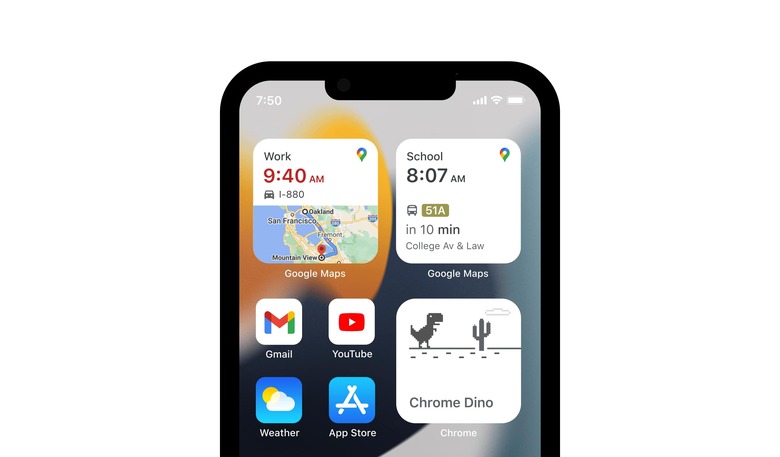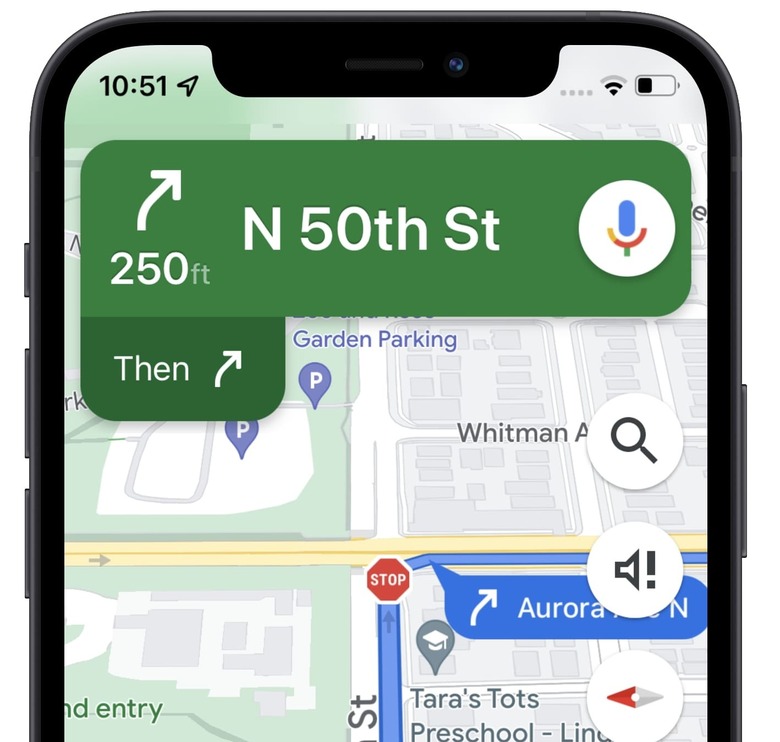This Google Maps Update Is Perfect For Anyone Planning A Summer Getaway
Google Maps has long been my mobile map application of choice, although Apple's rival offering Apple Maps has certainly restored parity between the two services in recent years.
For me, Google Maps is a combination Yelp-like service, maps app, and phone dialer, because nine times out of 10 the business I'm looking up through Google Maps — most often a restaurant, for which I'm checking something like its location or operating hours — I'll go ahead and call on the phone from right there in the app. Meantime, Google keeps rolling out one new feature after another to stuff into the product. Which leads some critics to complain of bloat, while others, like me, feel like the app is full-featured.
The newest tweaks? Tools that will help anyone planning to get away for a vacation this summer, including a more detailed navigation map, toll prices, and an iOS update that should help people better plan their trip away from home.
Google Maps app update
In a company blog post, Google Maps product manager Ruben Lozano-Aguilera explains what's coming. "Soon, you'll see the estimated toll price to your destination before you start navigating thanks to trusted information from local tolling authorities. We look at factors like the cost of using a toll pass or other payment methods, what the day of the week it is, along with how much the toll is expected to cost at the specific time you'll be crossing it."
Not a fan of toll roads, he continues? No problem. "When a toll-free route is available, we'll still show you that route as an option. Like always, you can choose to avoid seeing routes with toll roads completely. Simply tap on the three dots at the top right corner of your directions in Google Maps to see your route options and select 'Avoid tolls.'"
- Note: Google Maps users will start seeing toll prices on Android and iOS this month for nearly 2,000 toll roads in the US, India, Japan and Indonesia. With more countries coming soon.
More detailed maps, iOS updates
In terms of what else is coming, Google Maps will also start adding traffic lights and stop signs along your route. Creating a more detailed map experience that also includes other enhancements like building outlines and other areas of interest.
And it doesn't stop there. In some cities, Google Maps users will start seeing even more granular detail, like the shape and width of roads. Plus medians and islands in the roadway, to give you a better sense of where you are and what's ahead of you.
These changes will start rolling out to "select countries" in the coming weeks on Android, iOS, Android Auto and CarPlay. Other features coming:
- Access Google Maps from your home screen with new widgets: A new pinned trip widget lets you access trips you've pinned in your Go Tab directly from your iOS home screen. Users are able to see arrival times, the next departure for your transit trip, as well as a suggested route if you're driving.
- Navigate from Apple Watch: Apple Watch users, this update is for you. Soon, you'll be able to get Google Maps directions directly from your watch, without needing to start the navigation from your iPhone.
- Search and get directions with Siri and Spotlight: Google Maps is also integrating directly into Spotlight, Siri, and the Shortcuts app on iOS. From Google's blog post, "Once you've set up the shortcuts, just say 'Hey Siri, get directions' or 'Hey Siri, search in Google Maps' to access Google Maps' helpful information instantly. You'll start seeing this feature in the coming months, with enhanced Siri search functionality coming later this summer."
Other changes -- no more Schedule Explorer
Those changes involve features that are coming to Google Maps. In terms of features that are no more? Say goodbye to the Google Maps Schedule Explorer, if you haven't already. This feature previously allowed Google Maps users to check the schedules of upcoming metro transits. Now, though, Google appears to have quietly removed the feature to the dismay of anyone who relied on it.
This was an exceptionally useful feature for those who needed it, to do things like check how a train's arrival and departure times would affect their overall travel time. However, Google says that not enough people were using it.
More Pixel coverage: For more Pixel news, visit our Pixel 6 guide.

